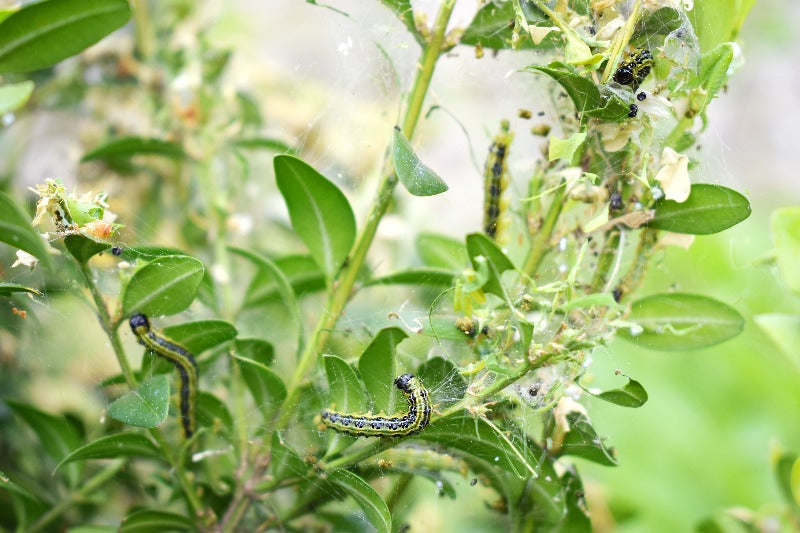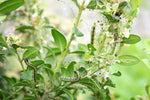
Box Tree Moth Caterpillar - (Steinernema Feltiae/Carpocapsae mix)
£9.00
Unit price perBiological controls are not always kept in stock, they are ordered in fresh. This can sometimes lead to a time lag between when you place the order and when it is despatched. Order by 10am Monday for same week despatch.
The box tree moth has now become an important pest on box (Buxus spp.), especially across the South of England. The larvae (caterpillars) feed on the foliage and within days can cause severe levels of defoliation and dieback. The Caterpillar can be controlled with nematodes. You can read the instructions for the nematodes HERE.
Spotting the pest
You may notice webbing or the caterpillars, you will also see their yellow eggs on the underside of leaves. The adult moth is brown.
Control
Remove as many caterpillars as feasible by hand along with leave that have extensive webbing.
We have been recommending nematodes for a couple of years, a recent study by the RHS has confirmed that they considerably reduce larvae numbers, therefore reducing pest numbers by affecting this life stage.
There are 2 generations of Box tree moth per year so nematodes treatments in spring and mid summer are a good idea, the air temperature should be 12°C or above.
Stephanie Bird, RHS Entomologist said ‘Nematodes can be a useful addition to the gardener’s armoury for control of box moth caterpillar’
Ideally you do 3 applications 2 weeks apart at each treatment time, the packs will last in your fridge for 2-3 weeks so only buy the first 2 doses.
The RHS would like to know if you have made a sighting of this pest, please fill out the survey here
£9.00
Unit price per

